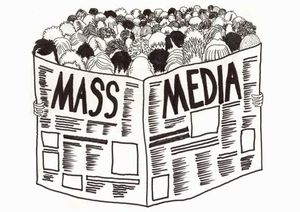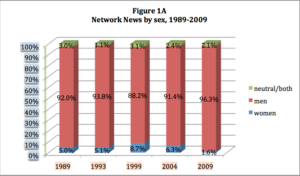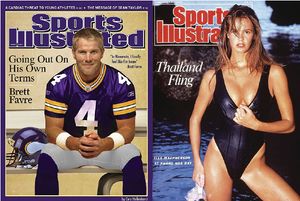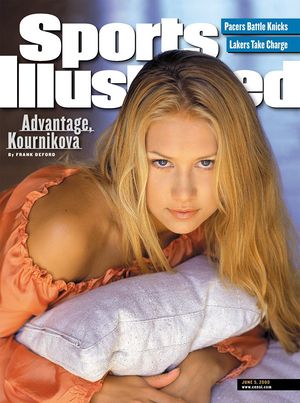Media Sexualization of Female Athletes

Media sexualization is a bi-product of the intersection of gender and sport. Key to understanding where the discrimination comes from is first understanding what sport and gender really mean. Gender can be defined as “a social construction used to assign a set of appropriate behaviours to the female or male sex[1]. Where as, sport is often referred to as an activity involving physical exertion and skill in which an individual or team competes against another or others for entertainment. Where these two intersect is the idea of gender constructs and entertainment for viewers.
Mass media plays a significant role in the transmission of these dominant cultural values. Thus, the media holds significant power over what and how sport images are produced. Particularly, female sports suffer the most form negative media sexualization due to the media’s ability to turn female sports into a show about how attractive the athlete is rather than the talent they have.
Sports Ideology: A Male Environment
Male Domination
The concept of gender is fostered at a very young age. From childhood boy’s activities and environments encourage competition and aggressive behaviour, which girls are not usually taught to adopt. Little thought is given to the idea that these activities foster socially constructed ideas about gender in sports. Today, organized sport has been a crucial arena of struggle over basic social conceptions of masculinity and femininity, and as such has become a fundamental arena of ideological contest in terms of power relations between men and women[2]. Taking us back to traditional gender roles, sports are a predicator for gendered attitudes. This comes from the idea that society clearly defines certain sports as appropriate for boys and other for girls. Where this differs is that most sports are geared towards males as they involve physical contact or bodily harm that is usually thought of as a masculine activity, one in which girls should not partake.

Media Coverage
The difference between coverage time of male and female sports is quite substantial. Recent research points to a disproportionate gender gap in sports media. For example, as of 1990, only 3.5% of all sports column inches and 5% of television newscast covers women’s sports[3]. The media has been slow to reflect the increased participation of females in sports. This could be for a number of reasons. Many people are still uncomfortable with the way female sports challenge the traditional notion of femininity and masculinity. As well, male athletes are portrayed as far more superior to female athletes which takes away from the importance of female sports. Female sports that do get covered are normally given attention because of the way the athletes or the sport looks, if the athlete “looks good” while playing they are bound to receive more attention.
Sexiest Social Norms

Social norms play a large part in how society interacts and perceives certain things. In sports, and culture in general, there is a dynamic social sphere where dominant (class, ethnic, etc.) ideologies are perpetrated[4]. For the purpose of this page we are looking at the specific gender traditional social arraignments in sports, which foster sexism and support patriarchy[5]. The reason female sports are often resisted by viewers is because they are considered unfeminine, they break the traditional gender norms that are constructed due to sexist social norms. For these reason, the general public has yet to consider women’s sports equal to men’s. It is clear that masculine ideals have defined and influenced most sports[6]. The cultural regulation of gender identity, due to sexist social norms, can be seen in mass sports media.
Why Does the Media Use Sexualization?
Media sexualization of female athletes – their beauty and sex appeal normally overshadows the coverage of their highlight plays. Rooted in sexist social norms, media sexualization is enticing to for-profit sport entities because of the appeal from more viewers and money it can bring in. American traditionalist society ultimately encourages this media sexualization.
Sex Over Athleticism
The media takes away from the sport aspect of it, for male viewers, and makes it more about the attractive females. By emphasizing female athletes sex appeal over athleticism and encouraging athletes to do the same, the media’s sexualization takes away self-esteem and individuality from women’s sports[7]. What drives viewers and sports broadcast entities is the sexual appeal of the female athletes, not their athletic talent or accomplishments. Their accomplishments are often portrayed in stereotypical ways that highlight traditional femininity and sex appeal[8]. Nothing is based on the real interest of the sport, but rather the the physical attractiveness of these athletes is often emphasized over their athletic abilities[9].
The Impact of Media Sexualization
Media sexualization has a negative impact on the athletes as well as young viewers. Star athletes are used in advertisements because they are successful, they provide viewers with inspiration or a role model. Yet, when athletes are sexualized, these positive attributes are diminished, particularly for female athletes[10]. The marginalization of female athlete’s athleticism, that results from sexualization, serves to reinforce male dominance and the idea that sports are a male domain. Patriarchal power, devaluing of women’s athleticism, and lessened self-esteem are all negative impacts of media sexualization of female athletes.
Body Shaming
As the media sexualizes, it gives an impression of the perfect female physique. This causes female athletes to strive for these high standards and generally experience dissatisfaction with their bodies. Not only are impossible standards set for the athletes themselves, but also for young female viewers at large. The act of publicizing glorified, seemingly unattainable standards for women, the media’s sexualization of female athletes can actually diminish the self-esteem[11] of the viewers. It is this narrow and stereotypical representation of female athlete’s bodies and looks that transmit unrealistic standards for appearance. Thus, young girls are set up to fail against these standards and ultimately experience pain from self-objectification.
Discouraging Female Sports
Due to the difficulty of balancing material comfort with the feminist ideal, media sexualization of female athletes has become increasingly popular. Female athletes are in a lose-lose situation, if they succumb to media sexualization they encourage sexism in sports and if they deny media sexualization they experience criticism from viewers. They either chose to silence their athletic accomplishments for more publicity and money, or they label themselves as unfeminine. The media’s role in the situation entrenches society’s patriarchal structure, which undermines the feminist movements attempt to achieve gender equality and greater opportunities for women”[12]. Arguably, “when sports are by, for and about men, the transformative potential of sport for females is at best limited, and at worst, lost”[13].
Female Athlete Examples

Anna Kournikova
Anna Kournikova is a female tennis play; she doesn’t actually make a lot of money by playing a sport. As well, she has never won any major tournaments, which would offer her that sort of money. However, she is one of the highest paid female tennis players because her endorsements emphasize her sex appeal over her athleticism[14]. Kournikova is an example of the how media sexualization can be so appealing to female athletes because of the benefits they bring to you individually. However, what she should realize is her succumbing to media sexualization ultimately hurts the overall feminist agenda.
Laura Boswell
Laura Boswell is a former college athlete. She wrote an article that was published in Sports Illustrated magazine called, “Olympians Posing Nude, Poses Questions”[15]. Her article claims that by allowing media sexualization of themselves, those female athletes undermine the accomplishments of past and future athletes. This speaks directly to Anna Kournikova and many other female athletes like swimmer Amanda Beard and race car driver Danica Patrick, who have both posed nude for magazines like Sports Illustrated and Playboy. Boswell argues that this behaviour from female athletes takes away from the fact that females are athletes and the deserve just as much recognition for the talent and accomplishments as men do.
See Also
References
- ↑ Roper, Emily A. Gender Relations in Sports. Sense Publishing, 2013
- ↑ Messner, Michael A. "Sports and Male Domination: The Female Athlete as Contested Ideological Terrain." Sociology of Sport Journal, vol. 5, 1988, 197-211.
- ↑ Messner, Michael A., Margaret Carlisle Duncan, and Kerry Jensen. "Separating the Men from the Girls: The Gendered Language of Televised Sports." Gender and Society, vol. 7, no. 1, 1993, 121-137.
- ↑ Messner, Michael A. "Sports and Male Domination: The Female Athlete as Contested Ideological Terrain." Sociology of Sport Journal, vol. 5, 1998, 197-211.
- ↑ Harris, Joseph. "Sports Ideology, Attitudes Towards Women, and Anti-homosexual Attitudes." Sex Roles, vol. 32, no.1/2, 1995, 109-116.
- ↑ Roper, Emily A. Gender Relations in Sports. Sense Publishing, 2013
- ↑ Liang, Emily. "The Media's Sexualization of Female Athletes." Inquiries Journal, vol. 3, no. 10, 2011.
- ↑ Roper, Emily A. Gender Relations in Sports. Sense Publishing, 2013.
- ↑ Buysse, Jo Ann M., and Melissa Sheridan Embser-Herbert. "Constructions of Gender in Sport: An Analysis of Intercollegiate Media Guide Cover Photographs" Gender and Society, vol. 18, no. 1, 2004, 66-81.
- ↑ John B. Nezleck, William Krohn, Dannon Wilson, and Laura Maruskin. "Gender Differences in Reactions to the Sexualization of Athletes." The Journal of Social Psychology vol. 155, no. 1, 2015, 1-11.
- ↑ Liang, Emily. "The Media's Sexualization of Female Athletes." Inquiries Journal, vol. 3, no. 10, 2011.
- ↑ Liang, Emily. "The Media's Sexualization of Female Athletes." Inquiries Journal, vol. 3, no. 10, 2011.
- ↑ Roper, Emily A. Gender Relations in Sports. Sense Publishing, 2013.
- ↑ Carty, Victoria. "Textual Portrayals of Female Athletes: Liberation of Nuanced Forms of Patriarchy?" Frontiers: A Journal of Women's Studies, vol. 26, no.2, 2005, 132-55.
- ↑ http://www.freerepublic.com/focus/f-chat/1198217/posts?page=5